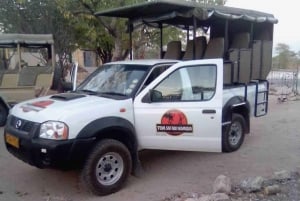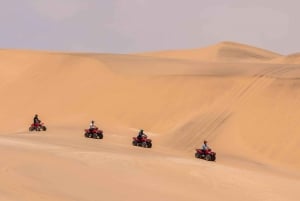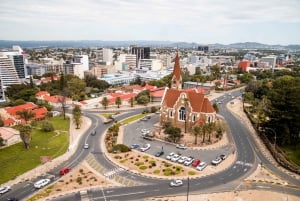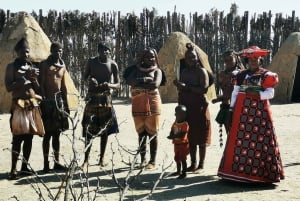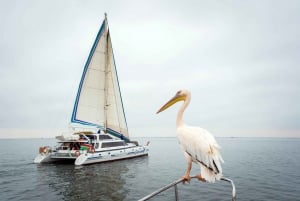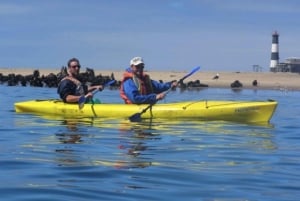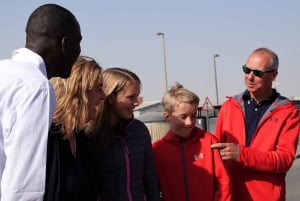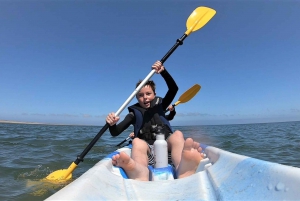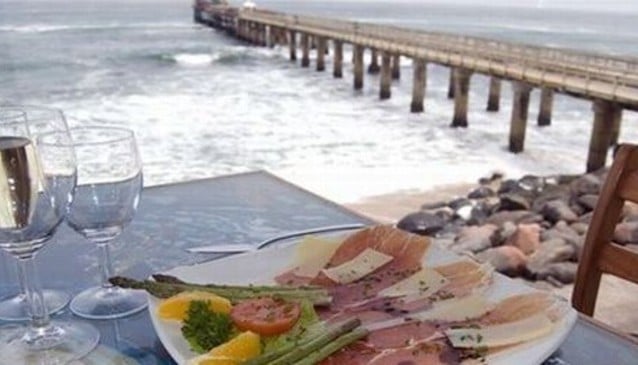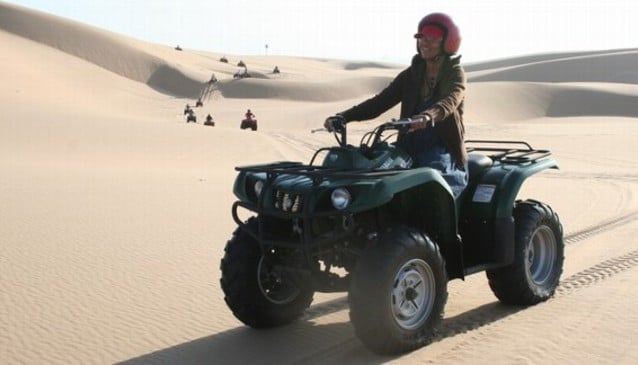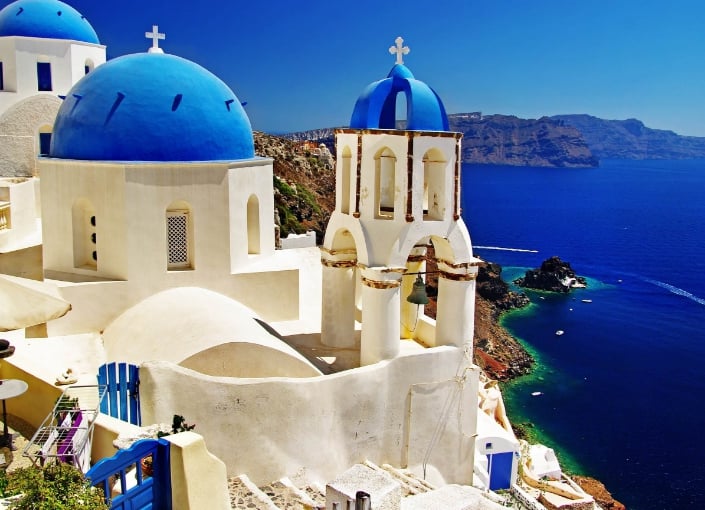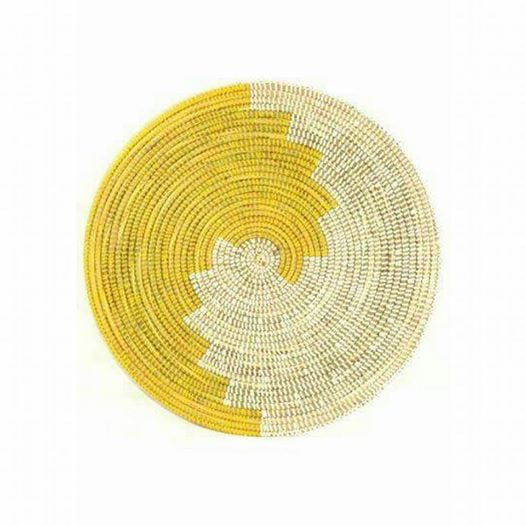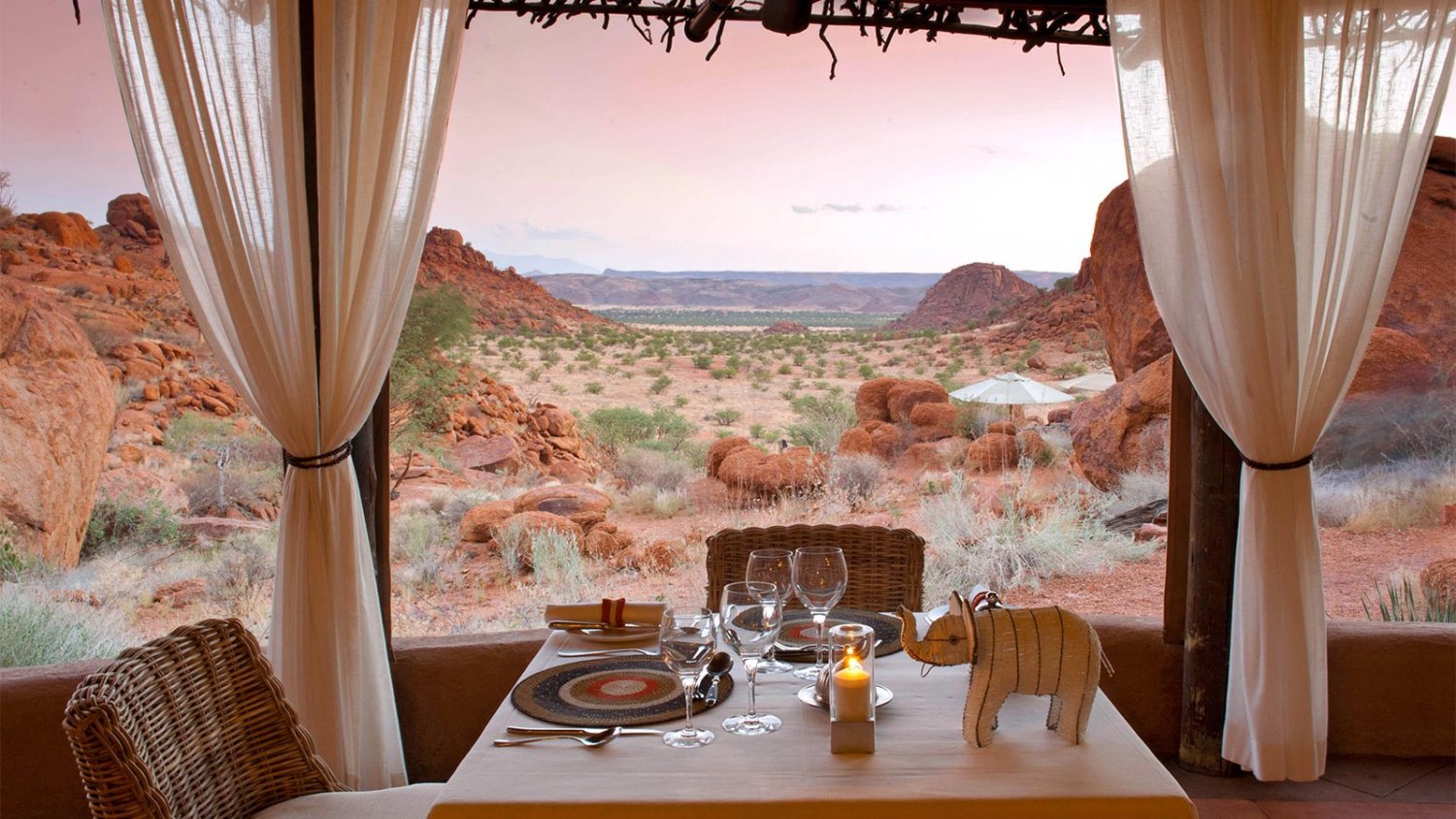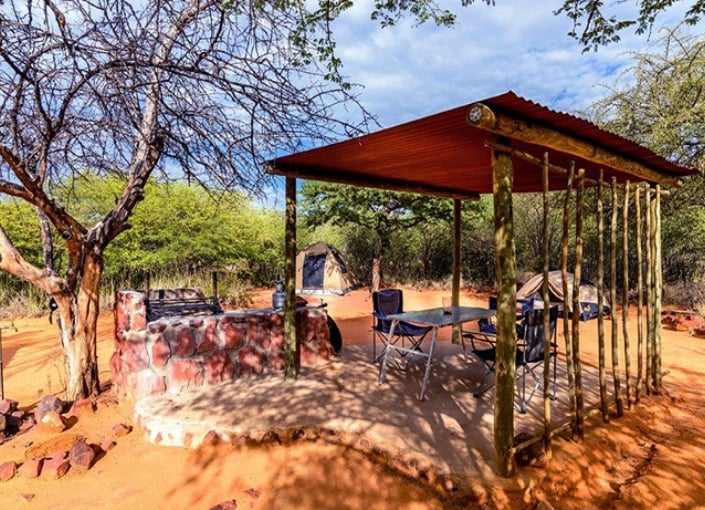Walvis Bay Continue
The dominant south-westerly winds create ideal conditions for a variety of water-sports and regattas for hobby cats, fireballs and catamarans are organised by the Walvis Bay Yacht Club. The Lagoon is an international acclaimed sanctuary for birds. Estimated to be 3500 years old it is one of the most important coastal wetlands in Southern Africa. As a must-visit for bird lovers, it provides a feeding ground for 200,000 birds of 50 species including flamingos, the chestnut-banded plover, Damara terns, pelicans, cormorants and sea gulls. A 3km long promenade ensures a scenic stroll on its edges. Further south lie the red to blue hues of the largest solar salt evaporation fields in Africa.Those keen to explore the open sea can set off in a sea kayak with an experienced guide. In addition to close-up views of Cape Fur Seals and water birds, bottle-nosed dolphins and occasionally leather-back turtles and whales are also spotted.
Visible from the main road, a few kilometres north of Walvis Bay visitors can see the Guano Platform. The platform covers 17,000 square metres and rests on 1,000 free-standing wooden stilts. Today the platform is home to thousands of birds as a nesting perch.As the Kuiseb River approaches the Atlantic coast south of Walvis Bay it disappears in a maze at the foot of the dunes.The area has been home to the Khoikhoi nomads for over 2,000 years. Their previous abodes are still found all over the delta. The descendants of the Khoikhoi people, now known as the Topnaars, still live in the area tending sheep and goats in this harsh environment.In the dry riverbeds the Topnaars harvest the seeds of an endemic melon called the "!nara" as a source of income. The seeds of this unique fruit are highly nutritious and said to have medicinal properties. The Kuiseb River Canyon, located about 135 km from Walvis Bay en route to Windhoek is one of the many attractions in the area. It is estimated that the canyon was formed about two million years ago. Occasionally the strong desert winds expose and rebury remains of horse skeletons that were euthanized due to glandular fever at the start of the 20th century. In the delta elephant tracks from the 18th century have been immortalised in the silt, along with the tracks of zebra, ostrich and cattle tracks. Ox-wagon trails on the "Bay road" built in 1844 for trade mission trips between Windhoek and Walvis Bay are also visible in the delta.
The Namib Naukluft Park lies south-east of Walvis Bay and is home to one of the world's strangest plants, the Welwitschia. This unique plant can reach a venerable age of more than a thousand years, surviving on the moist air from the ocean. It only has two leaves which the desert winds separate in strands. In this area the landscape varies from expansive gravel plains interspersed with granite island mountains north of the Kuiseb River to the vast dune sea of the Namib Desert to the south of the Kuiseb River. Herds of gemsbok (oryx) and springbok, mountain zebra, baboons and klipspringers as well as flocks of ostrich, roam the plains. Also set in the park is the Gobabeb Training and Research station. This important facility has been in existence since 1961 and is involved in the promotion of suitable lifestyles and practices through the management of natural resources in arid environments.
Sandwich Harbour is about 48 km south of Walvis Bay beyond the imposing dunes of the Namib desert the sands spill down to a lagoon and virgin beaches to create one of the most scenic spots along the Namib coast, called Sandwich Harbour. Used as a deep-water anchorage for sailing vessels in the 1800s, Sandwich Harbour is also an important wetland. The area is part of the conservation area to allow bird species and marine life to thrive. It supports more than 180,000 birds, mainly migrant wading birds.
In recent years Walvis Bay has also attracted cruise ships. Some of the vessels include the "Queen Elzabeth II", the "Europa" and the "Crystal Symphony".



